Photos showing the chaos and camaraderie of UK car meets
- Text by Jack Kenyon
- Photography by Jack Kenyon
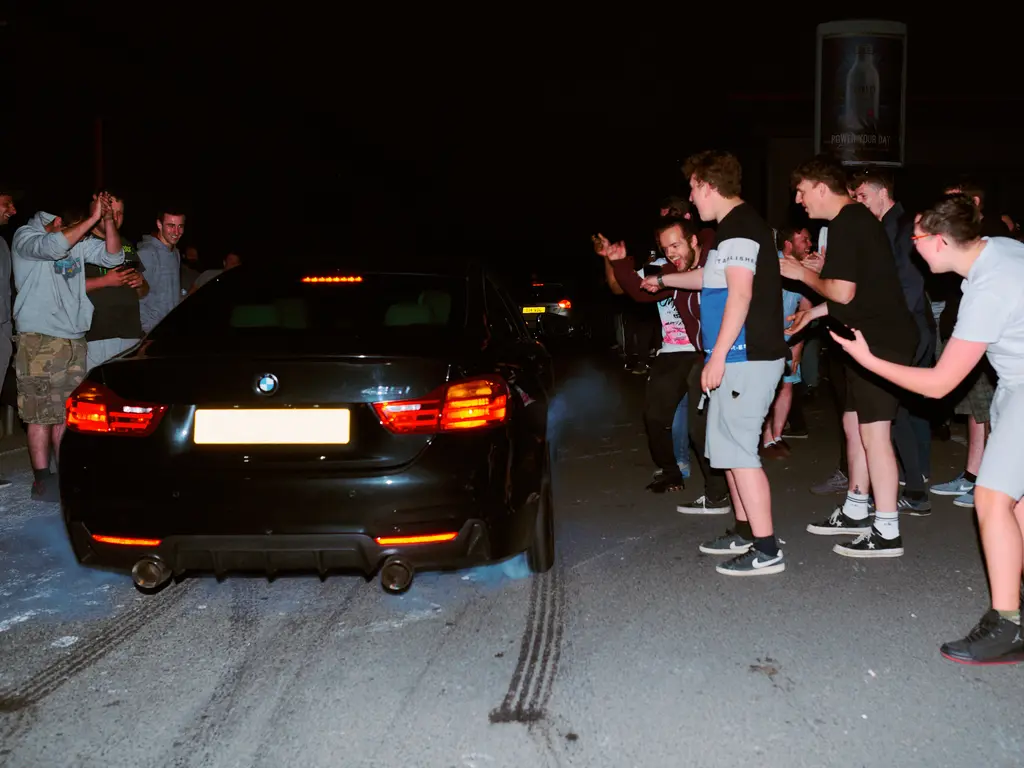
Car meets have been quietly gaining popularity in England. Under the cover of night, hundreds of boy racers gather in deserted industrial estates and remote car parks on the edges of UK cities to rev their engines, spin their wheels and rip donuts. Organised through social media, locations are revealed at the last minute, giving everyone at least a few hours before the police arrive, a new location is chosen, and the cat and mouse chase continues.
Intrigued by the subculture, I attended one of these meets on the outskirts of London. When I arrived, it was like stepping into a scene from Fast and Furious. A cacophony of engine noise mixed with the smell of burning rubber as the drivers, mainly young men in their twenties, peeled around the empty retail park – mainly in German whips: BMWs, Mercedes, Audis and Golf GTis, but with the odd Jeep, SuperBike and even mobility scooter sprinkled amongst them.
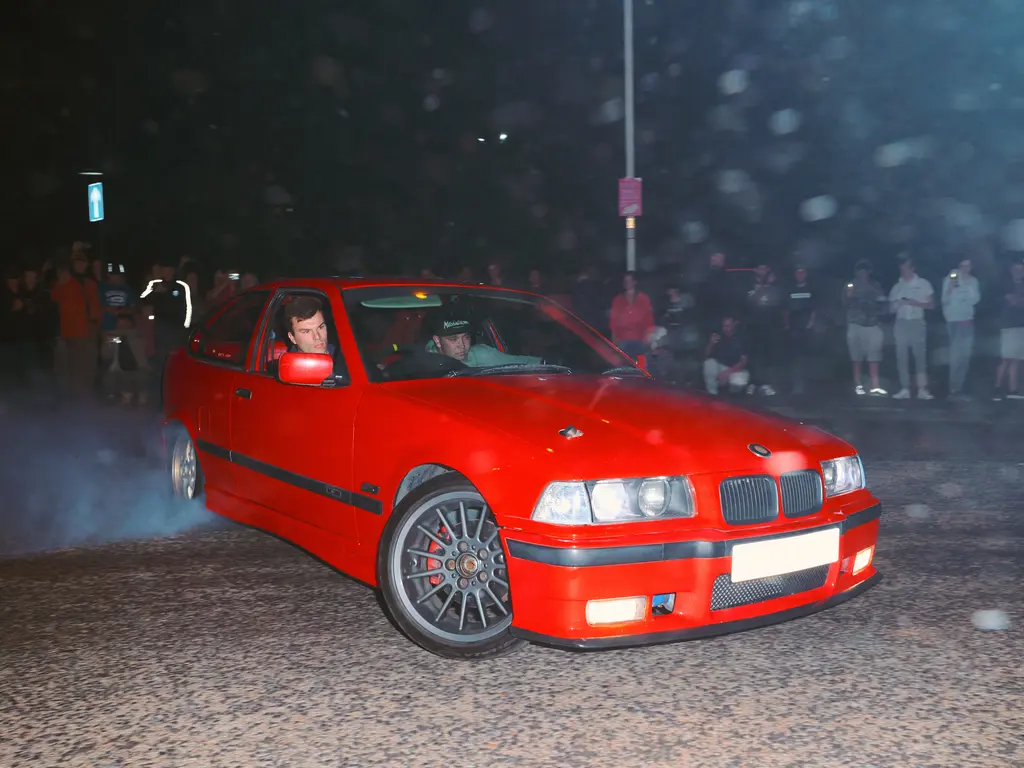
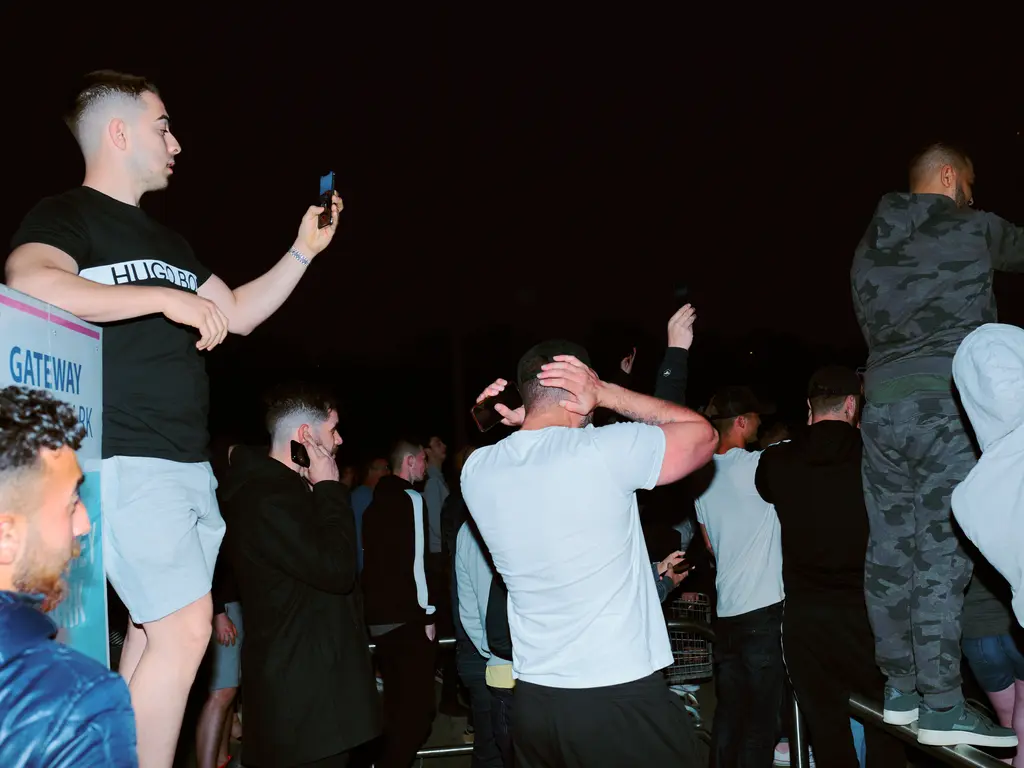
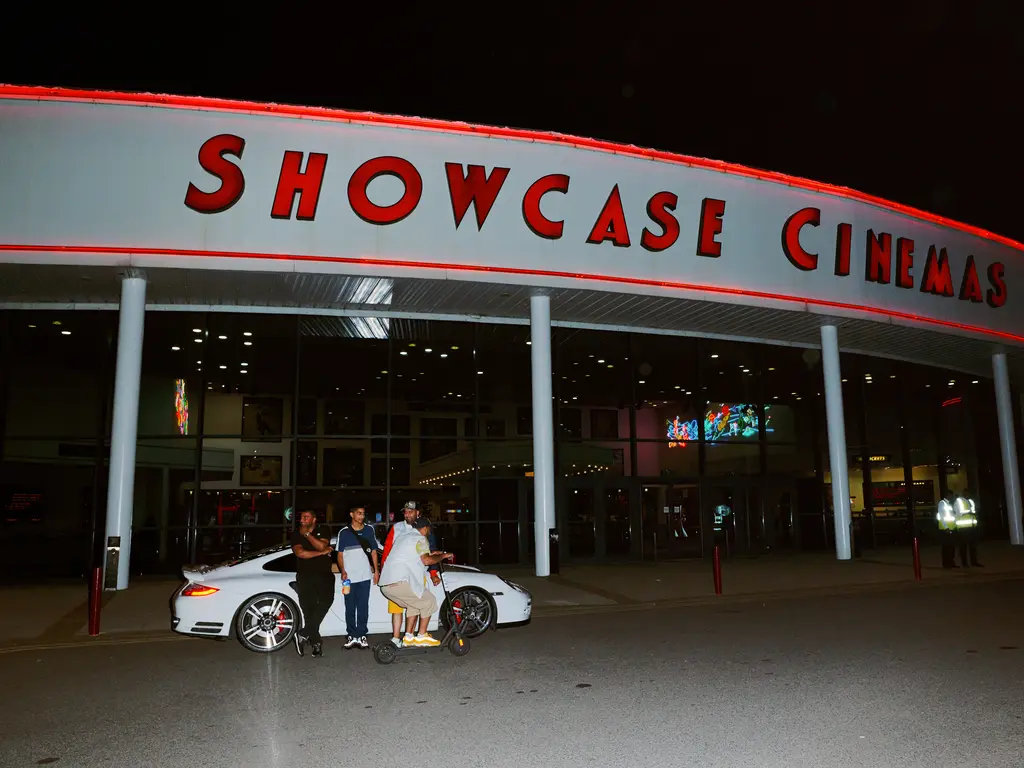
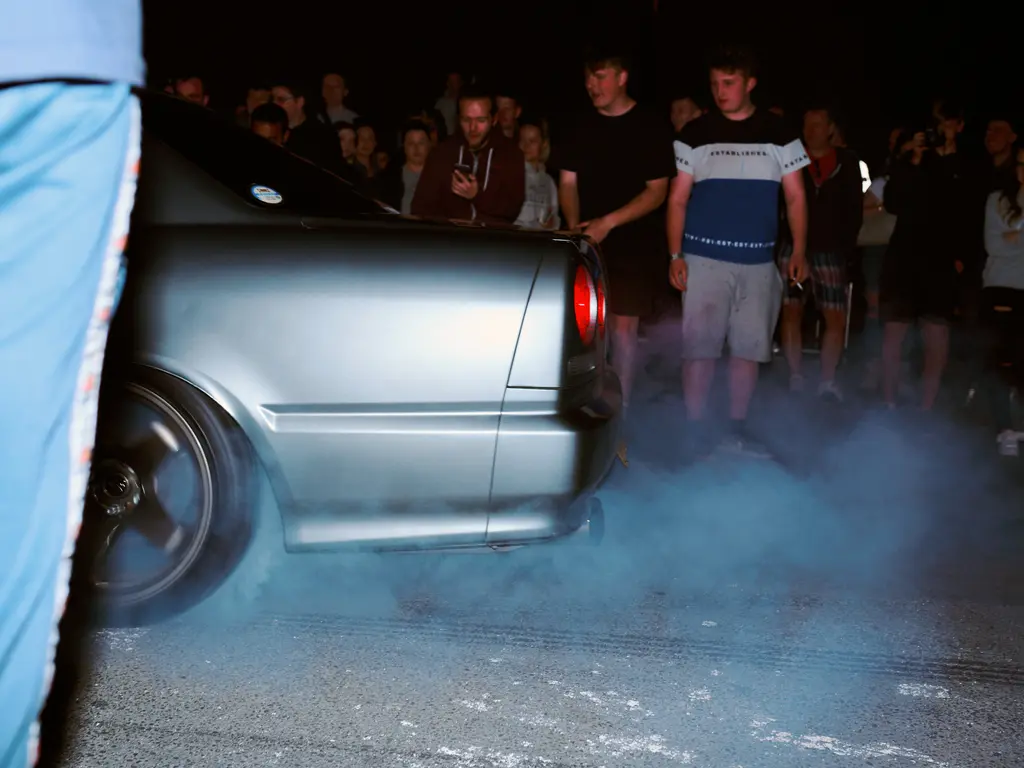

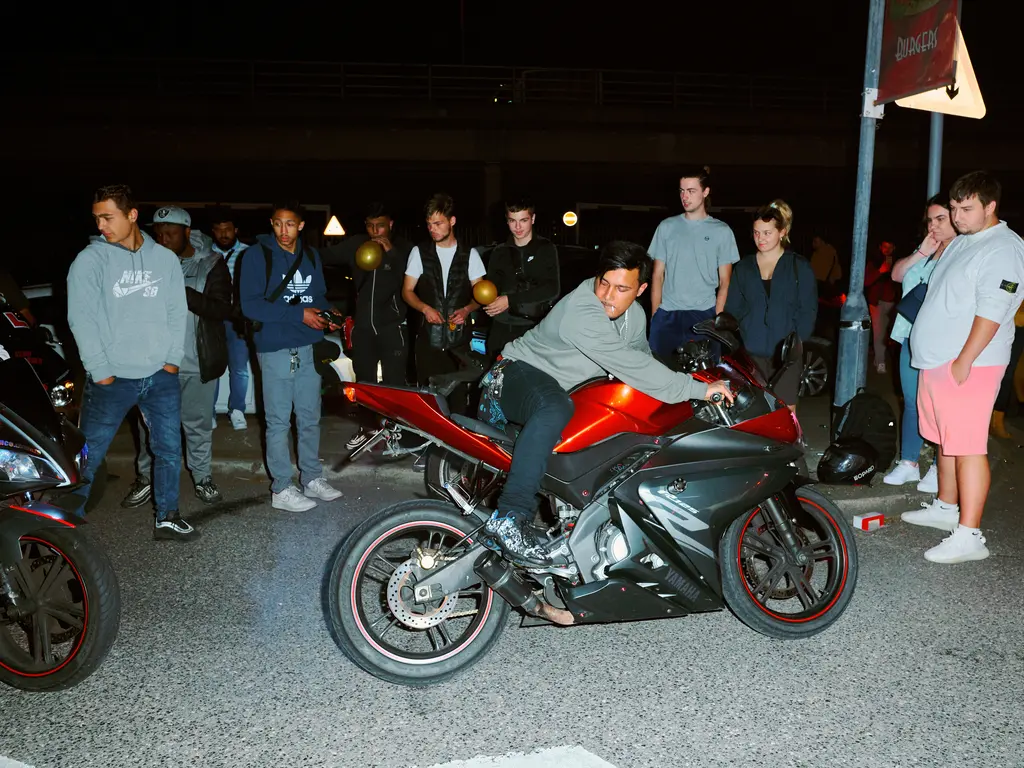
While not strictly illegal, these meets often attract the attention of the police for breaching the peace and reckless driving. Tonight everyone was in high spirits. The drivers were approachable and eager to talk about their passion for their cars, speaking about the thrill of sliding sideways and the adrenaline rush that comes with pushing things to the limit.
Modified with aftermarket parts for maximum noise and performance, each vehicle carries a unique stamp, whether it’s a mapped engine or glaring rims or striking neon underglow. As I walked through the crowd, I could see that the drivers were deeply committed to their craft and spent significant sums of money modifying their cars to achieve the perfect ear-splitting decibel.
There was also a sense of camaraderie and community among the drivers, who cheered each other on as they performed intricate manoeuvres, and exchanged tips on how to improve their sound systems, interior lighting and wheel spins. They spoke of the sense of belonging that comes from being part of a tight-knit community of like-minded individuals.
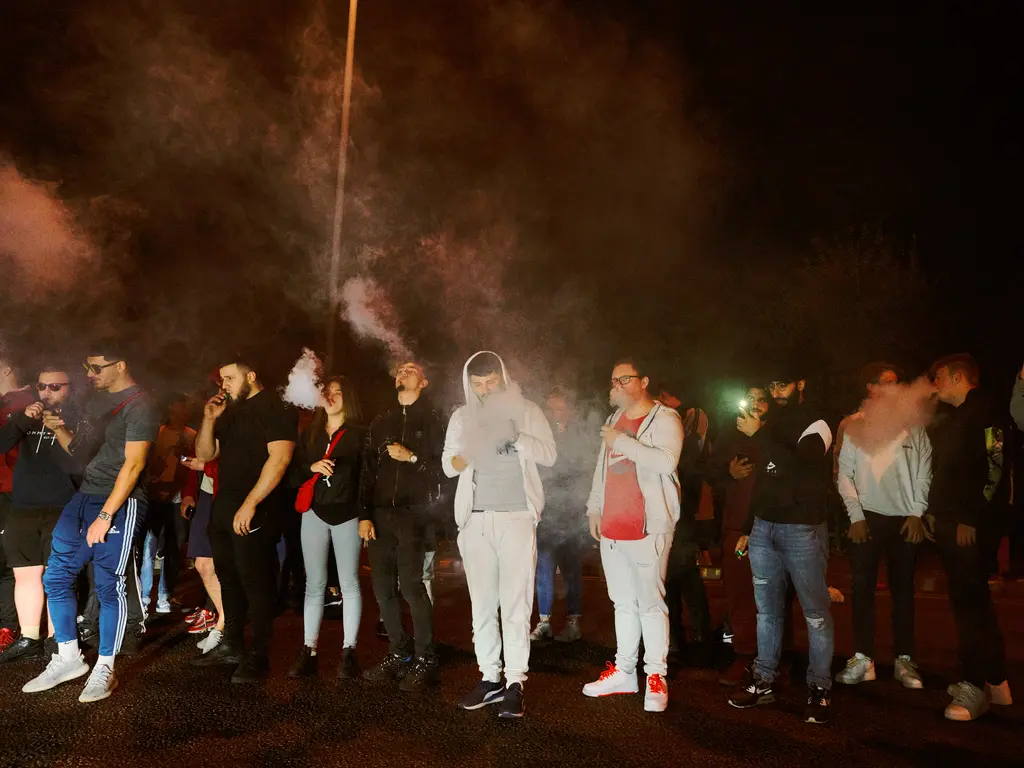
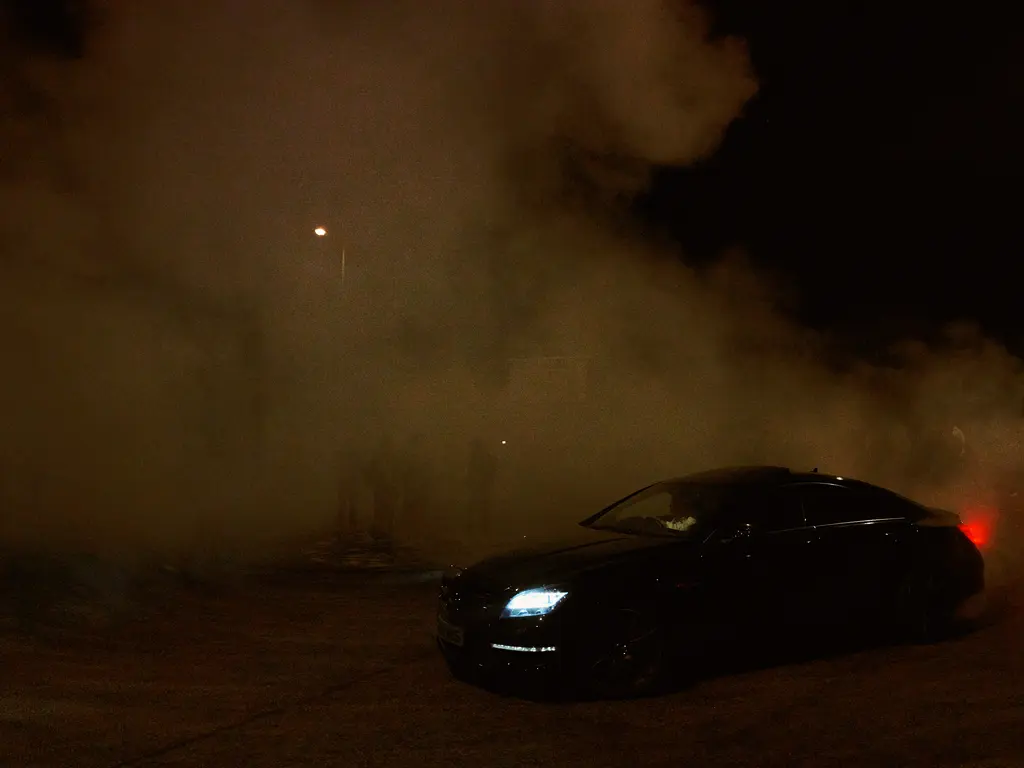

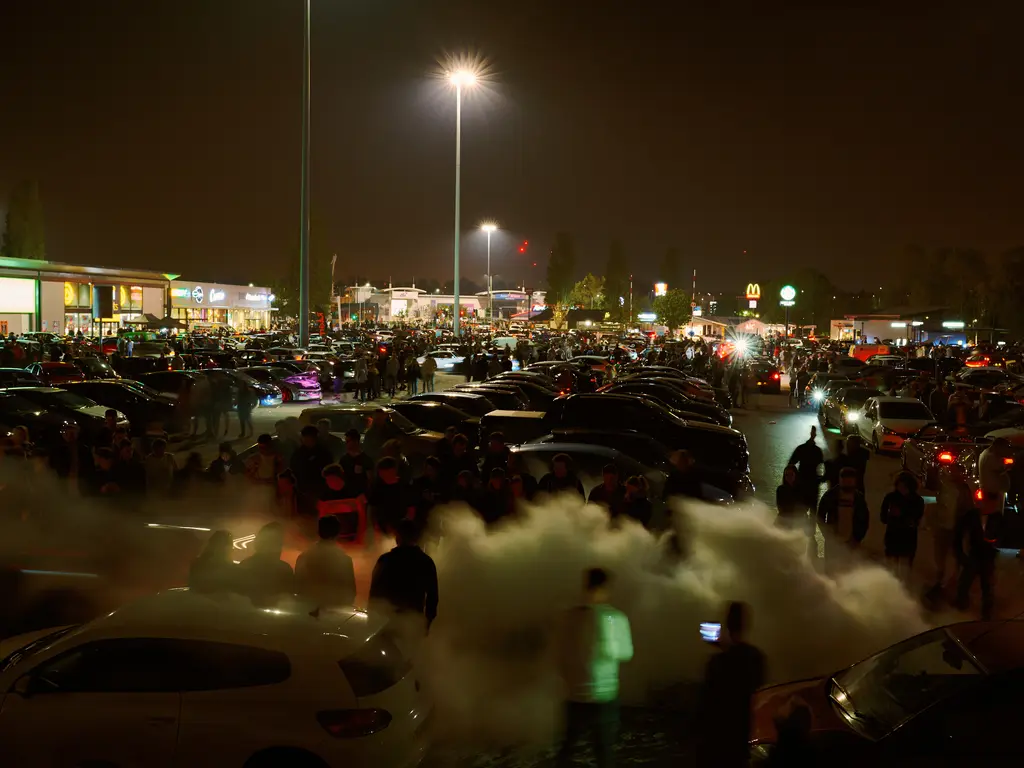
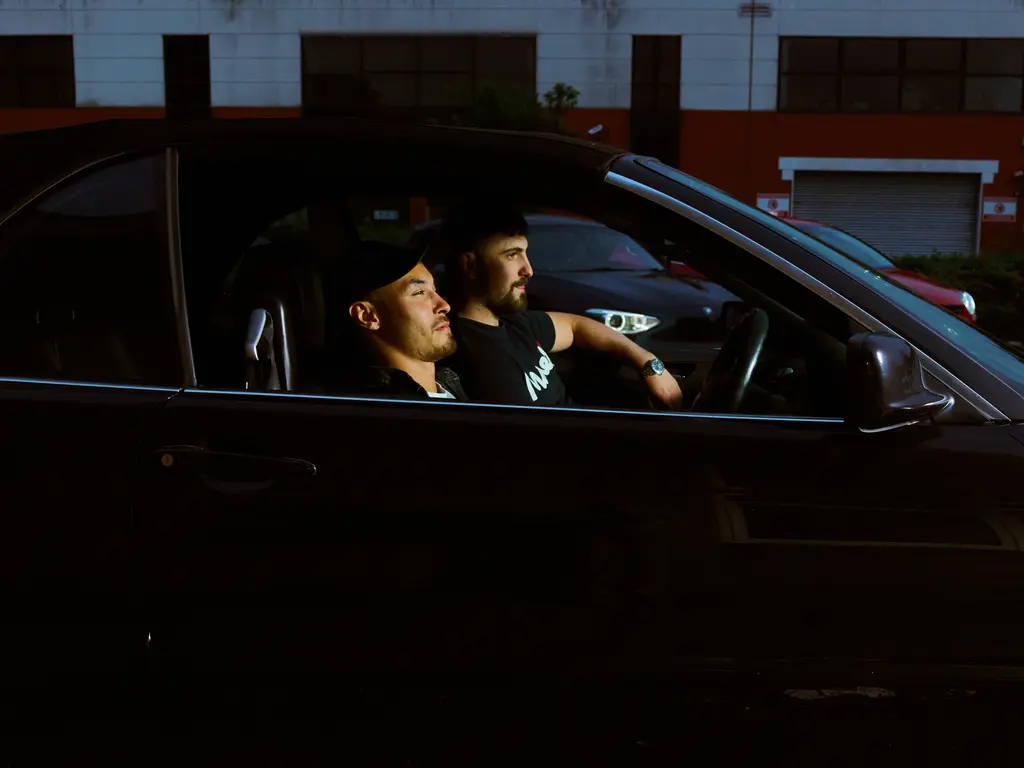
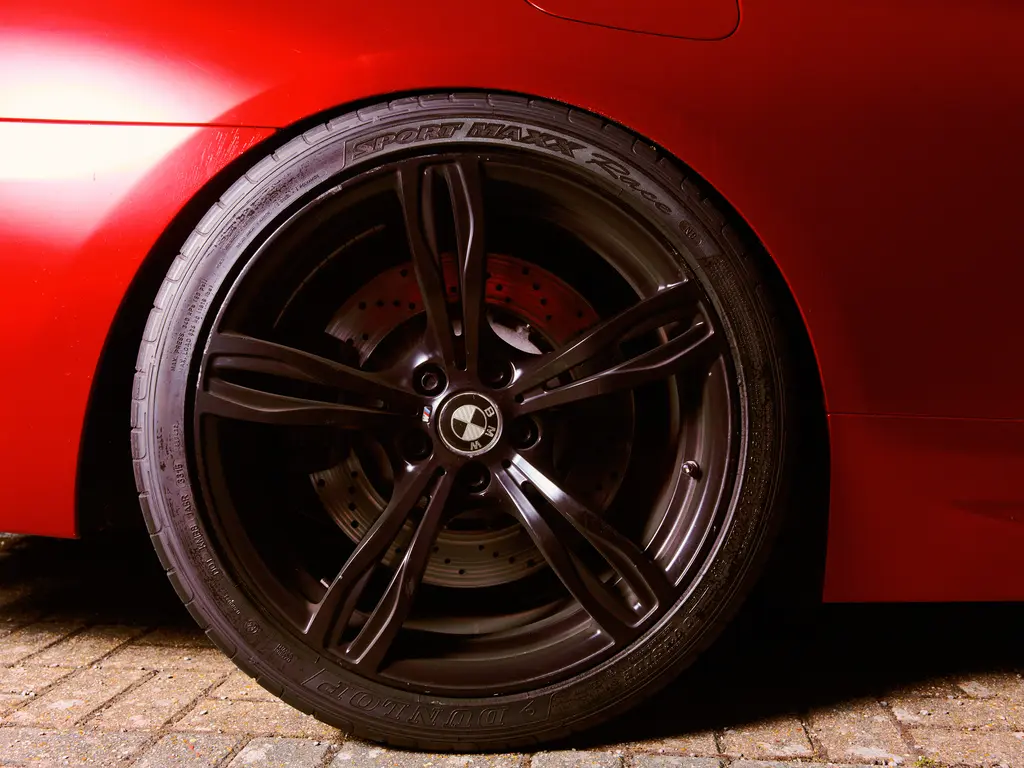
As the night wore on, the police arrived and another location was pinged out on social channels. All the cars moved out in a convoy, eventually arriving at another industrial estate ten minutes down the road. A crowd gathered around the mini-roundabout, cheering as drivers spun donuts faster and faster. The energy became even more frenetic as they pushed their cars harder and harder, performing increasingly daring manoeuvres, rubber, smoke and noise filling the air.
Taking it in turns, the cars continued to blur past in squealing smoke late into the night, the crowd gradually thinning until everyone tired out and a convoy of souped up vehicles disappeared into the night.
The only things left behind were the marks on the road and the faint smell of burnt rubber.
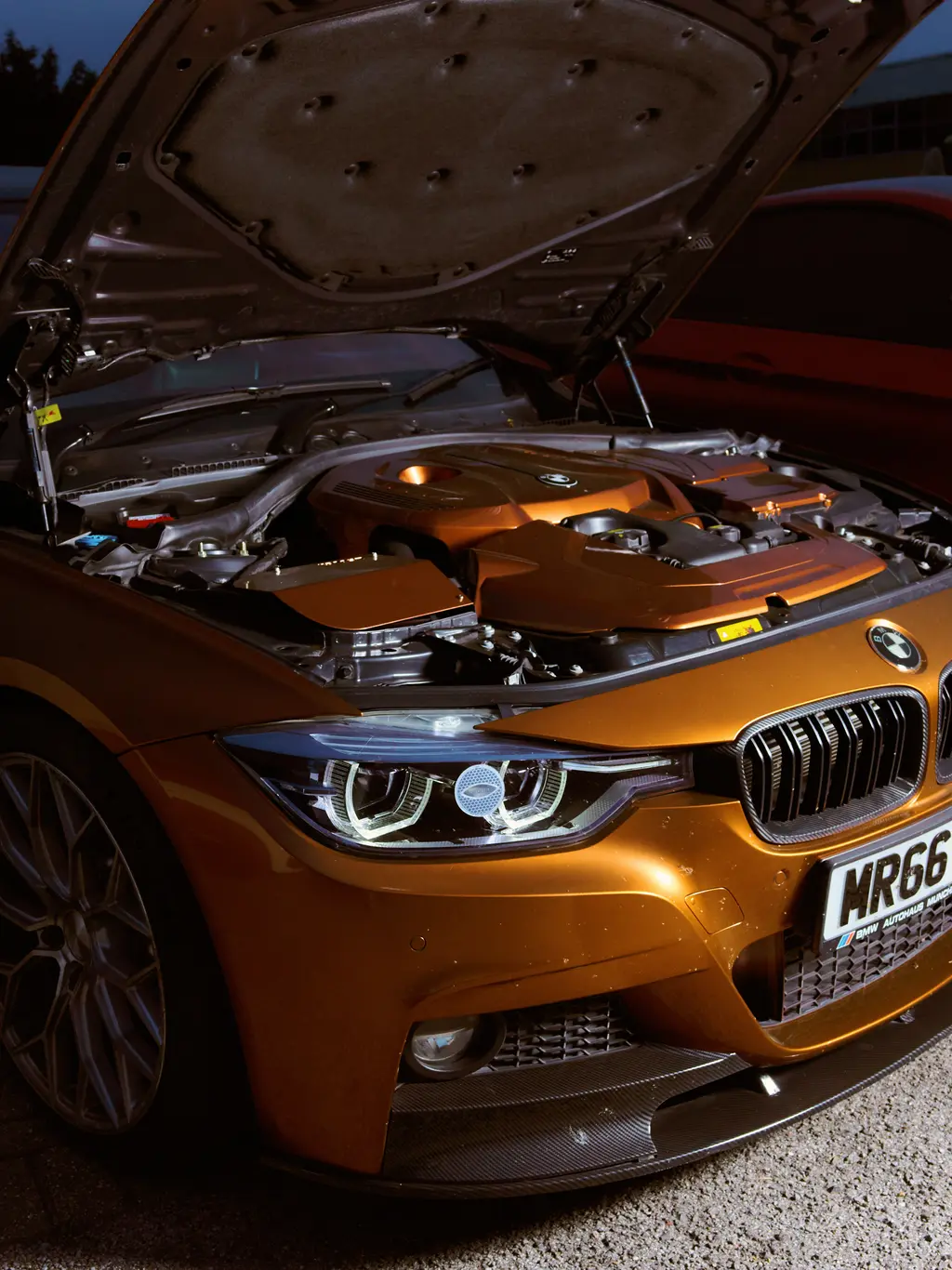
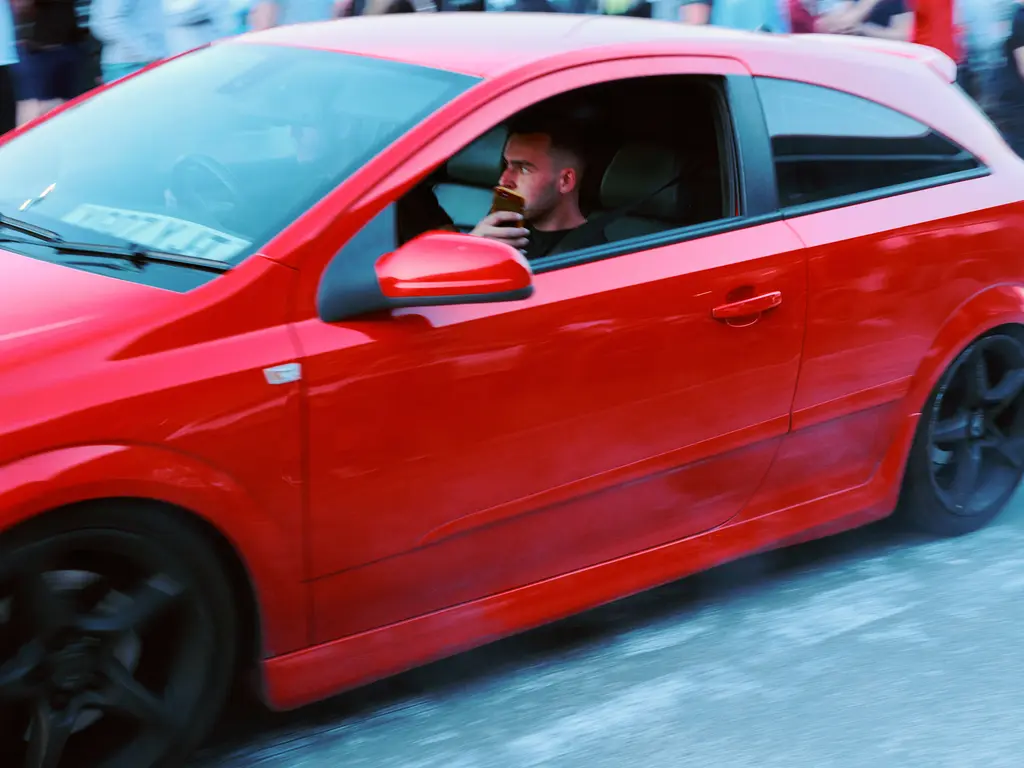


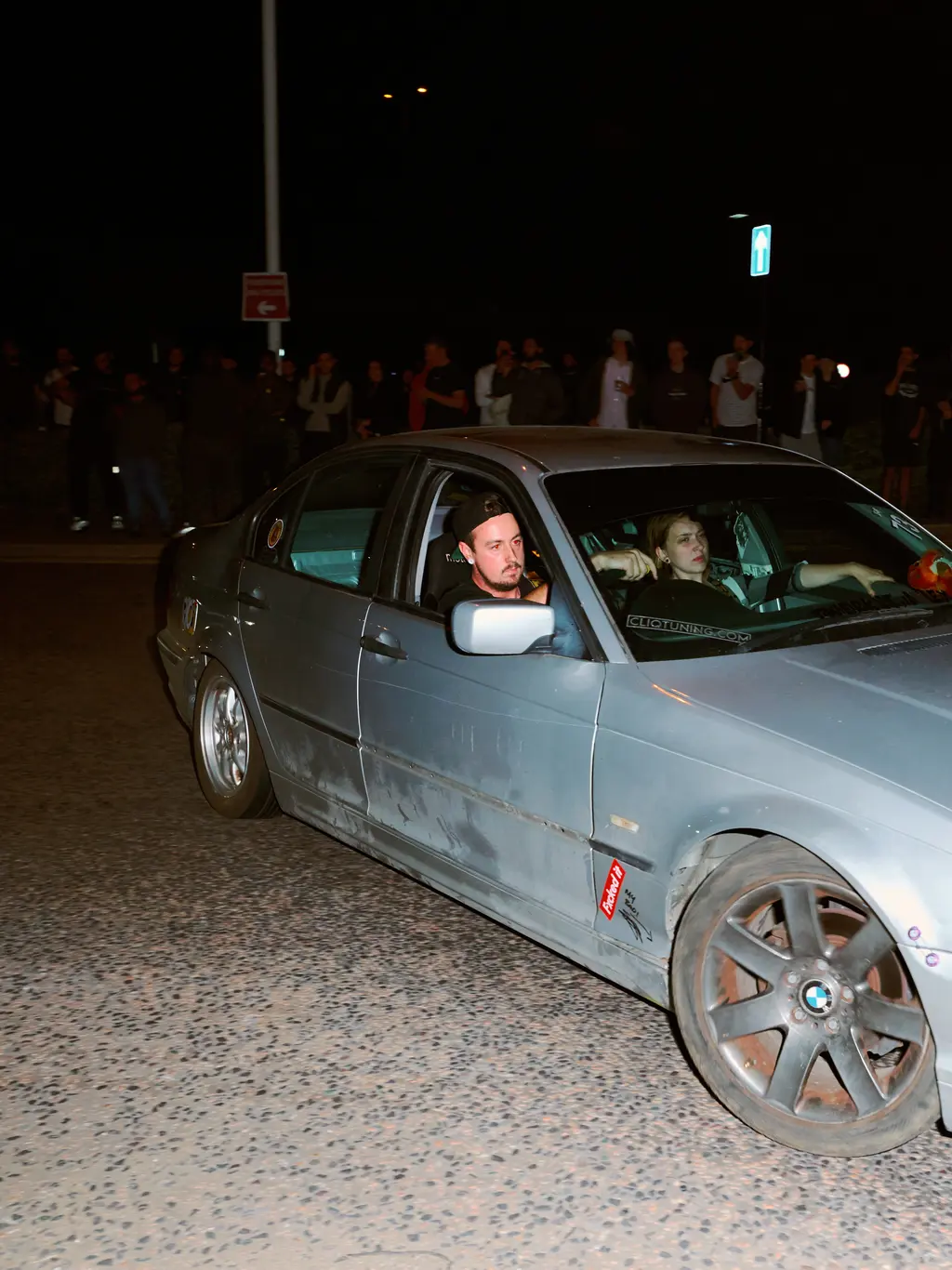
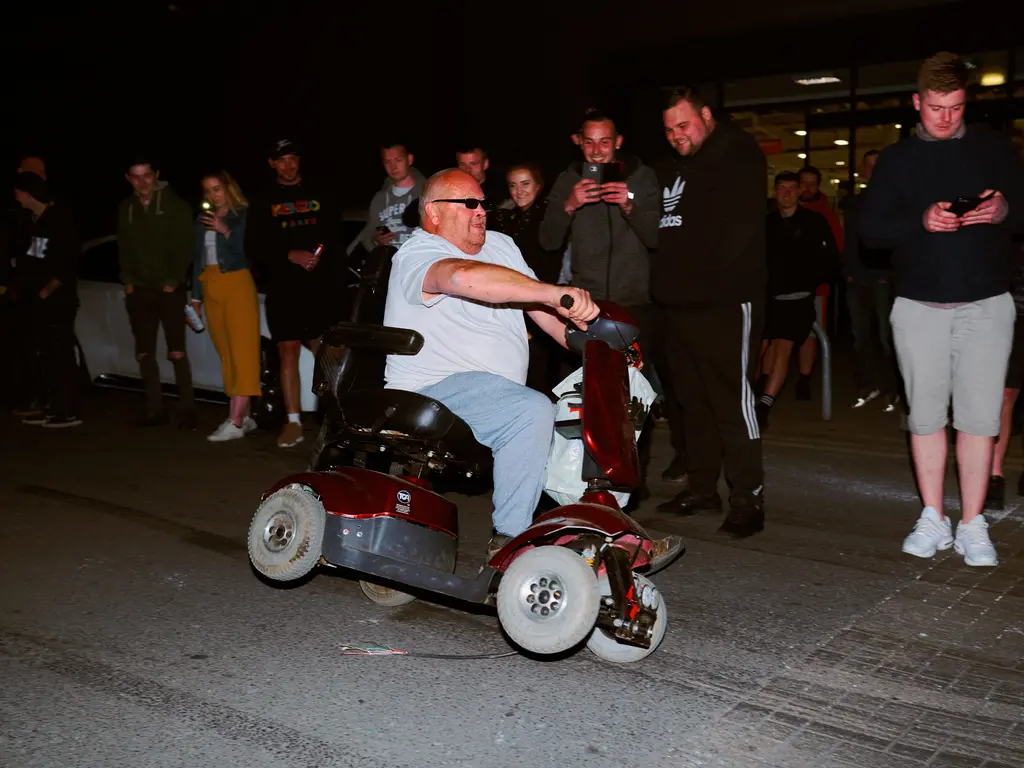
You might like

Jake Hanrahan: “Boys can cry, but we don’t all fucking want to”
Hard Feelings — In the latest edition of our column on masculinity and fatherhood, Rob Kazandjian speaks to the conflict filmmaker-journalist and Popular Front founder about his childhood, the found family and community at his Muay Thai gym, and the “complete counterculture” of ‘no rules’ fighting.
Written by: Robert Kazandjian

Euphoric portraits of queer joy and resistance at Trans Pride Brighton
Let us piss — Now over a decade old, the event grew to become Europe’s largest trans pride march. In a year when trans rights have come under the microscope more than ever, we went to this year’s edition, finding grassroots unity and collective rage.
Written by: Ella Glossop

Remembering the radical anti-nuclear Greenham Women’s Peace Camp
Life at the Fence — In the early ’80s, a women’s only camp at an RAF site in Berkshire was formed to protest the threat of nuclear arms. Janine Wiedel’s new photobook revisits its anti-establishment setup and people.
Written by: Miss Rosen

A new documentary traces the rise, fall and cratering of VICE
VICE is broke — Streaming on MUBI, it’s presented by chef and filmmaker Eddie Huang, who previously hosted travel and food show Huang’s World for the millennial media giant.
Written by: Ella Glossop

Warm, tender photos of London’s amateur boxing scene
Where The Fire Went — Sana Badri’s new photobook captures the wider support networks and community spirit around the grassroots sport, as well as the significance of its competitions to the athletes who take part.
Written by: Isaac Muk

We are all Mia Khalifa
How humour, therapy and community help Huck's latest cover star control her narrative.
Written by: Alya Mooro

